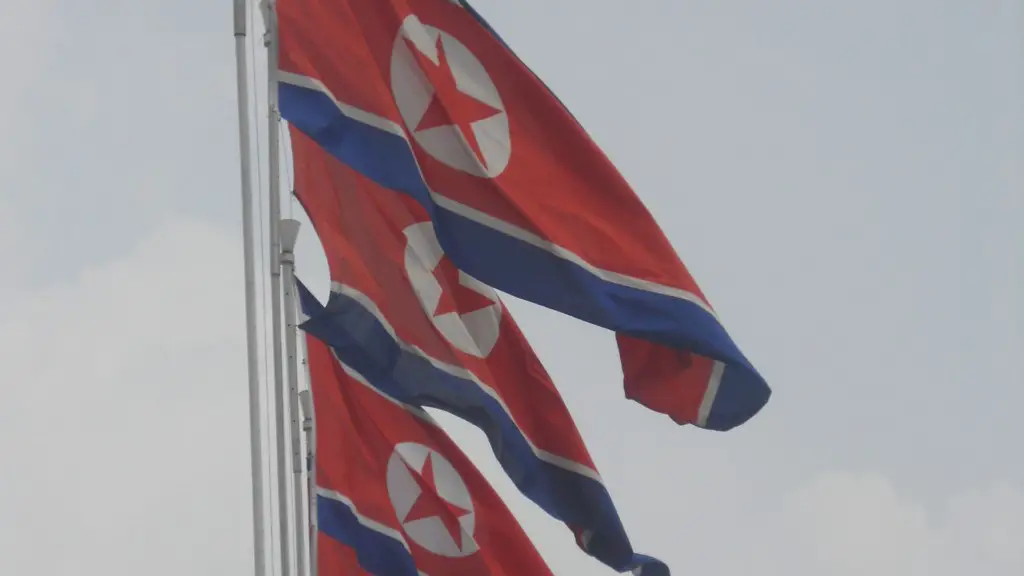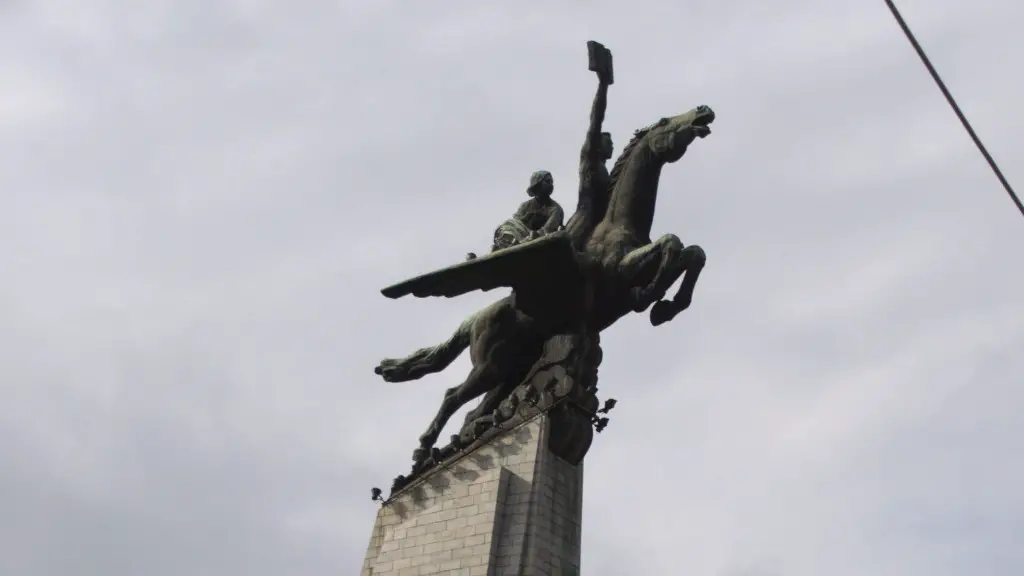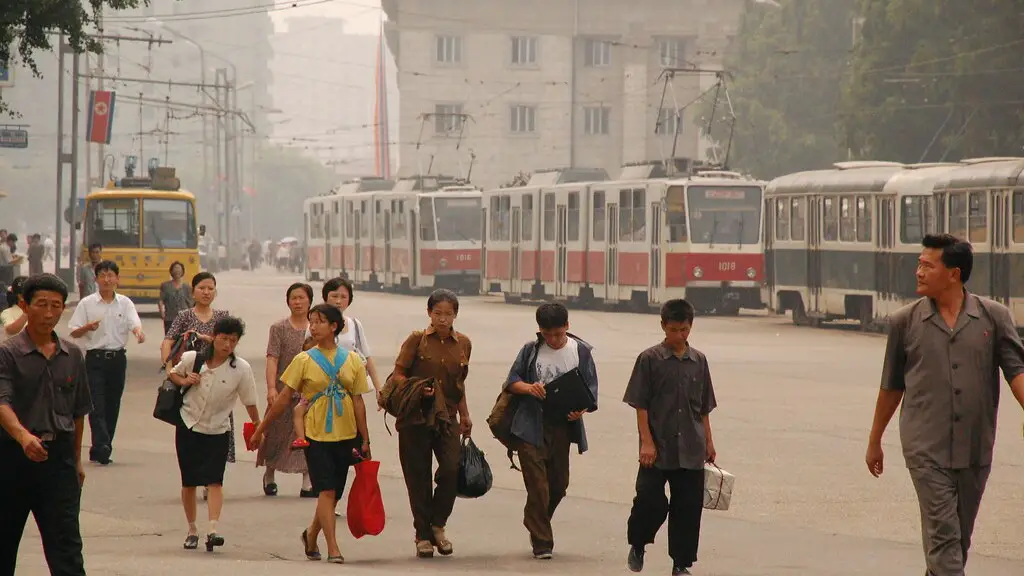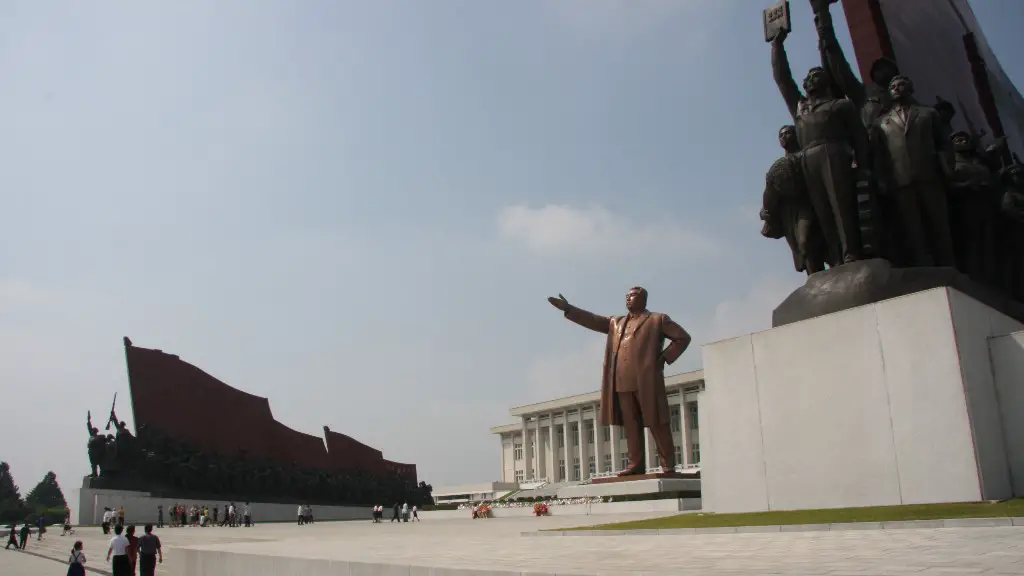North Korea’s nuclear capabilities have become a major security headache for the international community in recent years. Pyongyang has conducted several nuclear tests, raising fears about its intentions for the weapons and its capability to build a deliverable nuclear device. But just how much explosive power does North Korea have, and how advanced is its technology?
The short answer is that it’s unclear how much firepower North Korea has, or how advanced its nuclear technology is. Estimating the size of a nuclear weapon blast is not an exact science – the power of an explosive depends on more than just size. Temperature, pressure, geography, fissile material and device design all factor into the equation. In addition, nuclear experts believe that North Korea has conducted its tests with weapons of different sizes and designs, making it impossible to determine the average yield of its nuclear arsenal.
However, estimates from the U.S. government and outside experts suggest that the North Korean weapon tested in 2017 – believed to be a hydrogen bomb – had an explosive yield of over 250 kilotons (kt). That’s more than 20 times the yield of the bomb that destroyed Hiroshima in 1945. A blast of this size would be devastating for any city – the fireball would be around half a mile wide, and it would create a large crater 300 feet deep and a mile across.
Due to the secretive nature of North Korea’s nuclear program, it’s difficult to determine the extent to which its weapons technology has advanced. The country has conducted several tests in recent years, but the exact yields of these tests are unknown. Analysts believe that Pyongyang has yet to field any operational warheads – meaning that, while they possess the technical capability to develop them, they have yet to successfully do so.
When it comes to delivering a nuclear weapon, North Korea’s weapon technology is likely behind that of the United States and other major nuclear powers. Pyongyang is believed to possess a range of missiles, but most of these have a limited range of around 600 miles and could not reach the United States. The country also has the capability to build intercontinental ballistic missiles (ICBMs), but it is not believed to have tested any of these missiles – meaning that their effectiveness is unknown.
Despite its limited range and weapon technology, the threat posed by North Korea’s nuclear program is still very real. Pyongyang has declared its intention to develop and deploy nuclear weapons, and its nuclear tests show that it has the capability to do so. In addition, the country has reportedly begun to miniaturize its nuclear warheads, making them easier to mount on missiles, and analysts believe that it has enough fissile material to produce 15-20 nuclear warheads.
Missile Defence System
The US and its allied countries have responded to this threat by developing their own missile defence systems to protect against a potential North Korean attack. In 2017, the US deployed its THAAD missile defence system in South Korea, which is designed to intercept and destroy any incoming North Korean missiles. The system is highly advanced and has been tested multiple times, demonstrating its ability to successfully intercept North Korean missiles.
In addition, the US has taken diplomatic steps to try to contain North Korea’s nuclear ambitions. US President Donald Trump met with North Korean leader Kim Jong-un in 2018 and 2019 in an effort to negotiate a denuclearization deal. The US has also imposed a series of tough economic sanctions on North Korea, in an effort to pressure Pyongyang to abandon its nuclear program.
International Community Response
The international community has also taken action against North Korea’s nuclear program. The United Nations Security Council has imposed a series of sanctions against the country, and many countries have urged Pyongyang to return to negotiations. In addition, several countries, including China and Russia, have offered diplomatic solutions to try to find a peaceful resolution to the crisis.
However, the international community response has been limited, in part due to the fact that North Korea is a sovereign nation and has the right to develop its own nuclear technology. This has led to a lack of consensus on how to deal with the issue, and as a result, Pyongyang has continued to make progress on its nuclear program.
Nuclear Disarmament Debate
The debate over North Korea’s nuclear ambitions has become increasingly heated in recent years, and it has prompted a broader discussion about nuclear disarmament and the role of the international community in preventing the spread of nuclear weapons. Many countries have advocated for a total ban on nuclear weapons, while others have argued that countries have the right to develop and deploy their own nuclear weapons if they feel their security is threatened.
The debate over North Korea’s nuclear program has been mirrored in other countries, such as Iran and Pakistan. Each of these countries has its own unique domestic and geopolitical situation, but they all pose a threat to the security of their neighbors and the wider international community. As a result, the international community must find a way to navigate these tricky diplomatic waters and reach an agreement that will ensure the safety of people around the world.
Effects of International Sanctions
International sanctions have had a noticeable effect on North Korea’s economy, but some experts believe that the implications of the sanctions are much larger than the immediate impacts on GDP. According to some analysts, the sanctions have hampered the country’s ability to develop its nuclear program, as resources and materials needed for nuclear research and development are increasingly difficult to access.
Others, however, argue that sanctions have done little to prevent the progress of North Korea’s nuclear program and that the country has been able to find ways to continue its research and development. Moreover, some experts believe that the sanctions have caused more harm than good, as they have exacerbated the humanitarian crisis in the country and exacerbated the isolation of the Pyongyang regime.
Risks of a Nuclear-armed North Korea
The risks of North Korea having a nuclear-armed arsenal are real and significant. Experts have warned of the possibility of North Korea using its nuclear weapons against South Korea, Japan, or the US, or potentially selling them to terrorist groups. In addition, the risk of a nuclear-armed North Korea has prompted US and allied countries to increase their military presence in the region and pursue plans for a pre-emptive strike if the situation escalates.
Ultimately, the international community must continue to work together to find a diplomatic solution to the North Korea nuclear crisis. The aim must be to ensure that Pyongyang gives up its weapons, while at the same time taking steps to ensure its security and the security of its citizens. Until the international community can reach an agreement, the threat of a nuclear-armed North Korea will continue to loom over the region.
International Negotiations
International negotiations have been ongoing, with the US and North Korea meeting several times in recent years. However, progress has been slow, and both sides have accused each other of bad faith or a lack of seriousness in the talks. As a result, analysts have become pessimistic that a lasting agreement can be reached, and have warned that the risk of conflict is growing.
Ultimately, it remains to be seen if a diplomatic solution can be found to the North Korea nuclear crisis. Despite the progress that has been made in diplomatic negotiations, the situation remains fragile and the risk of conflict is high. The international community must continue to work together to find a solution that serves the interests of all parties, and ensure that North Korea’s weapons are never used.




